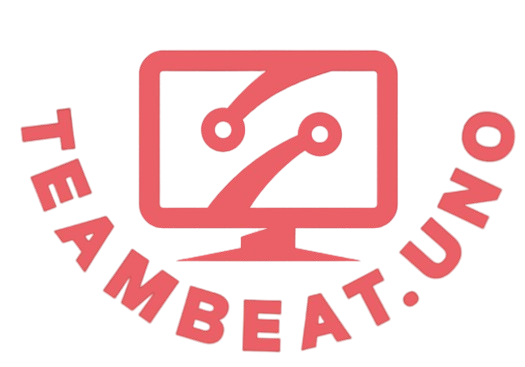Understanding the Importance of a Portfolio
As students transition from academic settings to the competitive job market, the significance of having a strong portfolio cannot be overstated. A well-structured portfolio serves as a visual representation of one’s skills, creativity, and personal brand, effectively showcasing the unique value a candidate brings to potential employers. It encapsulates the essence of an individual’s journey, highlighting academic accomplishments, practical experience, and distinct projects that exemplify the learner’s abilities and insights.
In industries characterized by intense competition, a portfolio can be a determining factor in securing employment. Employers often sift through numerous resumes, and having a portfolio means candidates can stand out in a crowded field. Rather than relying solely on verbal or written descriptions of capabilities, a portfolio allows candidates to present tangible evidence of their work. This visual impact not only captures attention but also reinforces the candidate’s commitment and passion for their profession.
Moreover, a portfolio is more than just a tool for job hunting; it can also be an instrument for self-reflection and personal growth. Through the process of assembling a portfolio, students engage in critical evaluation of their work, identifying strengths and areas for improvement. This reflective practice not only enhances self-awareness but also aids in defining career objectives and aspirations within their chosen fields. Thus, a portfolio can be considered a living document, evolving alongside the individual as they acquire new skills and experiences.
In summary, the importance of a portfolio cannot be overlooked for students entering the workforce. It not only showcases a candidate’s competencies and creative flair but also serves as a powerful mechanism for self-assessment and continuous development. Focusing on creating a strong, well-curated portfolio can significantly enhance opportunities and propel one’s career forward in the long run.
Identifying Your Target Audience and Goals
Identifying a target audience is an essential step in building a successful portfolio, as it helps tailor the content and presentation to meet specific expectations. For students fresh out of a course, potential audiences may include employers, prospective clients, or even peers in the same field. Understanding who will be viewing your portfolio is crucial in order to present your work in a way that resonates with them.
Begin by reflecting on the industries and roles you are interested in. If your ambition is to secure a position in graphic design, your audience will likely consist of hiring managers from design agencies, corporations, or freelance clients. Understanding the common qualifications and preferences in the graphic design sector will inform you how to present your skills and experiences effectively. Look into their values, what they prioritize in applicants, and how they evaluate portfolios.
Once you have a clear understanding of your audience, establish specific goals for your portfolio. This could involve determining the type of jobs you wish to apply for or identifying particular strengths and skills you wish to emphasize. This may include showcasing creativity through innovative projects or demonstrating technical skills through case studies or detailed descriptions of your work process. By focusing on these elements, you can craft a compelling portfolio that highlights your unique offerings.
Additionally, consider segmenting your portfolio to suit different audience types. For instance, a digital marketing portfolio may feature a variety of projects aimed at different goals—social media campaigns, SEO case studies, and analytics reports. By customizing the focus of your portfolio to align with the interests of different potential employers or clients, you stand a higher chance of making a significant impression.
Curating and Presenting Your Best Work
Curating a strong portfolio is an essential step for students aiming to demonstrate their skills and experience to potential employers. The selection process should prioritize work that exemplifies a range of abilities, showcasing versatility and competence in various areas relevant to your field. Start by reflecting on your academic projects, freelance work, and any personal initiatives that highlight what you can offer. Make a list of these projects, then evaluate each for its impact, relevance, and quality.
Quality should always take precedence over quantity. It is tempting to include every project you have completed, but a carefully curated selection will present a more professional image. Aim for a portfolio of 5 to 10 pieces that represent your best work. Prioritize projects that not only display technical skills but also demonstrate your problem-solving capabilities and creativity. Be sure to include projects that may showcase growth or improvement, which can illustrate your learning journey effectively.
The presentation of your portfolio is equally important as its content. Whether you choose a digital or physical format, ensure that your work is displayed in an organized and visually appealing manner. For digital portfolios, consider using platforms tailored for creatives, enabling integration of multimedia elements such as images, videos, or interactive components. In contrast, a physical portfolio should be neatly arranged, with high-quality reproductions of your work. Regardless of the format, storytelling plays a crucial role. Incorporate narratives that provide context to your projects, explaining not only what you created but also the thought process behind your work and the outcomes achieved.
Ultimately, your portfolio should serve as a cohesive representation of your skills, experience, and personal brand. By carefully curating and presenting your best work, you will create a powerful tool that speaks to your potential and aspirations in your chosen field.
Additional Tips for Maintaining and Updating Your Portfolio
Maintaining and updating your portfolio is a critical aspect of showcasing your skills and projects effectively. A well-curated portfolio not only demonstrates your current capabilities but also reflects your ability to evolve with industry trends. Establishing a regular schedule for updates is advisable; this could be monthly or quarterly depending on your workload and the frequency of new projects or skills acquired. By adhering to a consistent update schedule, you ensure that your portfolio remains relevant and aligned with your professional growth.
It is equally important to periodically review and remove outdated work that no longer represents your best abilities. This may include obsolete projects or skills that have become less relevant in your field. Curating your portfolio to include only your best work promotes a strong first impression and signals to potential employers that you are committed to maintaining high standards. Furthermore, incorporating projects that showcase new skills and techniques can demonstrate to employers that you are proactive in your learning and development.
Seeking feedback is another valuable strategy for enhancing your portfolio. Engaging with peers, mentors, or industry professionals can provide insights into what others perceive as your strengths and weaknesses. Constructive criticism can be instrumental in refining the contents of your portfolio, ensuring that it accurately represents your expertise. Remember to approach feedback with an open mind and a willingness to make adjustments as necessary.
Lastly, staying informed about changes in industry trends is critical. Regularly researching and following industry publications, webinars, and networking events can help you recognize what skills and projects are in demand. This awareness allows you to adapt your portfolio accordingly, ensuring that it not only displays your current skills but also aligns well with future opportunities. Ultimately, dedicating time and effort to maintaining your portfolio can significantly enhance your visibility and job prospects in a competitive job market.


No responses yet